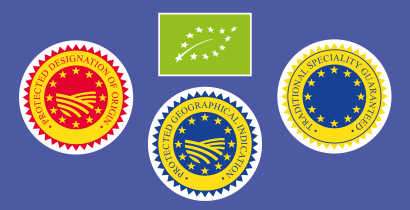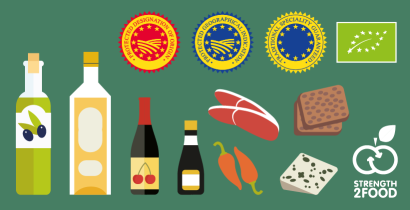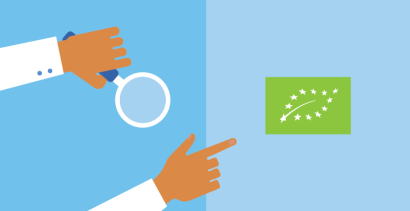Food Quality Schemes: Addressing Common Questions
Last Updated : 27 May 2021Some European foods are renowned for their unique quality characteristics like strong links with their geographic origin or sustainable production methods. Various quality schemes protect these products within and outside the European Union. The role of these schemes is to ensure that the products they protect are recognised for their special qualities, protected against fraud and misuse, and that their producers are fairly compensated. This article answers some questions about such schemes and their relevance.
How do food quality schemes benefit producers and rural communities?
Most activities related to the production and processing of foods protected by the quality schemes take place in rural areas. A direct benefit of this is that it generates new and often well-paying employment opportunities for residents of these areas.1
From a cultural perspective, schemes that focus on the geographic origin and traditional aspects of foods help in the preservation and promotion of cultural heritage.1 This includes maintaining traditional know-how as well as the preservation of gastronomic traditions. In addition, the collective nature of the certification process brings different stakeholders together and promotes local cooperation.2 If a product gains popularity among consumers, it may attract tourists who are interested in understanding the history of the product, its production, manufacturing and quality control process. As a result, allied sectors like tourism and hospitality in rural areas can also benefit from food quality schemes. The economic development of these regions can also lead to other benefits such as improved infrastructure and public facilities, better land use, and efficient management of natural resources.2
However, for these benefits to reach rural communities and producers, products protected by quality schemes must be marketed well. Furthermore, to maximise the benefits of quality schemes, complex bureaucratic procedures should be simplified, and fraudulent practices eliminated.1
Are protected food products sustainably produced?
While discussing sustainability, it is important to consider its three dimensions – social, economic, and environmental. Food quality schemes can generate significant added value such as new opportunities for employment and entrepreneurship, thus contributing to the economic sustainability of rural areas. By preserving traditional knowledge, culinary culture and regional identity, they promote social sustainability.
The schemes often require the use of local species or breeds and specific agricultural practices.2 This can positively impact the environmental aspect of sustainability. The Strength2Food project found that products protected by food quality schemes produce lower greenhouse gas emissions per hectare of land in comparison to their non-protected counterparts.1 Since products that are protected due to their geographic location must be produced and processed within a certain territory, emissions related to transportation are lower.1 However, water pollution and carbon footprint per tonne from the production of protected and non-protected products are typically similar.1
The organic scheme is especially important in the context of environmental sustainability because organic food production is known to offer several benefits such as supporting biodiversity, improving the health of pollinators, using natural resources responsibly, and better waste management.3
Some products are protected for their geographic origin as well as organic production methods. Such products can provide benefits typical to both kinds of schemes.
Are EU food quality schemes recognized outside Europe?
Food products that are protected for their geographic origins are considered under the EU’s system of intellectual property rights.4 This means that the names of these products are protected within the EU as well as abroad. Often, specific protection agreements are signed between the EU and third countries to ensure that products are protected against misuse or falsification. Conversely, products from foreign countries can also be protected within the EU if an agreement has been reached.4 Examples of such products include PDO Phu Quoc fish sauce from Vietnam and PGI Doi Chaang coffee from Thailand, which Strength2Food investigated. However, some quality schemes like France’s Label Rouge are country-specific. This means that products protected by them are recognised for their special qualities only within the country.
The sale of origin-protected foods is an important source of income for European producers. In 2019, sales of such products were worth €74.76 billion.5 More than one-fifth of this amount was generated through sales outside the European Union.5 These sales were possible only because EU quality schemes are recognised and protected within as well as outside Europe.
For organic foods, different rules apply. If a product is produced abroad following the EU requirements for organic farming, it can be exported to the EU as an organic food product.6 Whether a food product produced in the EU, following EU rules, is recognised as an organic product outside the EU depends on the importing country’s legislation.
Why are protected foods more expensive?
For several reasons, products protected by food quality schemes can be more expensive than their non-protected counterparts. The production of these products can be more expensive due to the requirements that need to be followed.1 For example, a Geographic Indication product could be required to use local resources. In some cases, this could be less cost-efficient than using non-local resources. Organic producers are often required to use special products such as natural pesticides which might be more expensive than synthetic ones. Production and processing of protected products also often require highly skilled employees with specialised knowledge. Hiring such employees can be more expensive for the producer.
References
- STRENGTH2FOOD (Strengthening European food chain sustainability by quality and procurement policy).
- Food and Agriculture Organization (FAO) (2018). Strengthening sustainable food systems through geographical indications: An analysis of economic impacts. Rome, Italy: FAO.
- Sandhu HS, Wratten SD, & Cullen R (2010). Organic agriculture and ecosystem services. Environmental science & policy, 13(1), 1-7.
- European Commission website, Quality schemes section. Accessed 18 November 2020.
- European Commission (2019). Study on the economic value of EU quality schemes, geographical indications (GIs) and traditional specialities guaranteed (TSGs). Brussels, Belgium: European Commission
- Commission Regulation (EC) No 1235/2008 of 8 December 2008 laying down detailed rules for implementation of Council Regulation (EC) No 834/2007 as regards the arrangements for imports of organic products from third countries


